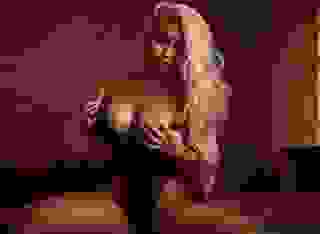- Sci-Fi & Fantasy
- Gabatrix: The Terrorists of Batrice
Note: You can change font size, font face, and turn on dark mode by clicking the "A" icon tab in the Story Info Box.
You can temporarily switch back to a Classic Literotica® experience during our ongoing public Beta testing. Please consider leaving feedback on issues you experience or suggest improvements.
Click hereDisclaimers
Tags: Swearing, Space, Science Fiction, Future, Sex, Love, War, Violence, Blood, Interspecies, Male Human, Female Aliens, Scalie, Human/Alien Sex, M/FF
Disclaimer 1: This story deals with a war between humanity and an alien race. Coercion and terrorism maybe a part of this story. This story deals with scenes of a battle or war that might be disturbing to some readers that experienced traumatic events.
Disclaimer 2: This story is meant for adults as it contains sex. This story deals with violence and blood. Reader discretion may be advised. This is the fifth book of the Gabatrix series. It is highly recommended that you read the other Gabatrix stories before jumping onto this story.
Special Thanks to my Patreon supporters:
Jordy, Frank Nordhaus, Quintin Martin, Nightsound, and Anthony Kestle for their generous donations
And, of course, the other patron supporters for allowing me to write and supporting the universe that I write. :)
By CMed
Prologue
"As I stare at a statue of myself, my only greatest fear in the universe is that my recorded actions will become more and more deluded as things progress. As the history books are written, we must be careful that it too does not get lost in the sea of time." Ciro Gabatrix at the Cebravis' Commemoration Ceremony, 2328 AD.
....... The Human race fights a war with three alien clans. One has chosen to become its ally to fight the other two........
.......Even with an alliance, humankind struggles to keep everything in order. The colony of Batrice is a constant challenge in the actions of diplomacy and peace.........
.......The tragedy of the past is the domineering spirit of the colonies. It can rear its ugly head and strike at any time.......
Chapter 1: February 17th, 2349 (Prelude)
The path has been both a problematic and valiant struggle for the ones that they call humanity. Together we stare up from the ground of a place called Earth......the "Planet of Lost Cause," as it is called today. It was a name that was only adopted in the last one hundred years, even though it was seemingly abandoned by most of the human species long before that. Many historians coined and phrased the name after the famed Gabatrix Experiment that gave the human race to traverse to new worlds.
As you stare up, you try to look through the dark clouds where the heavy sulfur, plastic deposits, and acidic vapor resides. It isn't exactly the most ideal of places. The ocean levels have risen as the polar icecaps have melted. Many of the great coastal cities of three hundred years ago have been driven underwater. It has been replaced with a contaminant that reduced the waters to a ghastly orange and red color.
The landscape that we are located at is that of the Krâvanh Mountains or, as it was, also known as the Cardamon Mountains. It is a famous place for the areas of Southeast Asia. The former great continental peninsula would house many nations from Thailand, Cambodia, Vietnam, Laos, Malaysia, Myanmar, and Singapore. There are many mountains located on this peninsula that connects to China and India. The Krâvanh Mountains are just an example of these marvels of Earth's former glory. It housed an extensive collection of various fauna and wildlife till the eventual extinction by the destruction of the environment. The range's history is profound as it would serve as a place of refuge for many people in the past.
As we take one last look at the mountainous sides, we can see the numerous rocks, boulders, eroded dead trees, and the occasional skeletons of long-dead wildlife. A waterfall is not far from us. Water still moves, but it is significantly less than it did a while back. The infamous "Orange Muck," as it has been called, has reduced the liquid to a toxic sludge that still moves with a never-ending resolve. It is everywhere. There is no safe haven, and the population that had to live here each has their own tale on how they managed to survive against the inevitable.
You already know this tale before, but its importance is one that always drives us back to this world. To not know of humanity's birthplace is to deny its achievements. Earth was our home. Without it, we would have never managed to reach into the great regions of space.
The sacrifices of billions managed to perform a miracle in getting its population to the great world of Mars. From then on, they managed to reach that of Cebravis and so forth. Without the mountains, the human race would have drowned as the sea levels would have consumed them. It is here that we also uncover something as well. The mountains are one of many that hold the great bastion cities where the human race resided. Carved into the solid stone, the buildings consisted of housing, facilities, robust water filtration systems, administration centers, closed-in agricultural areas, and fusion power reactors. Even with the incredible filters, the Orange Muck was a menace. In the last forty years before the great Exodus of Earth, the experiences gained from this were vital. Many of the architects, technology, and construction workers that helped make this possible would move to create the great canyon cities on Mars.
What is left of these former bastion cities on Earth is little more than hulks and ghost towns. A few people remain trying to maintain the buildings, but much of it is falling into disrepair. Their goal in keeping the robust filtration systems working is an ongoing struggle that may never end. The Orange Muck never left, and the remaining population on Earth debate if it is still worth living in this place as more lavish homes have been created elsewhere. The remaining people of Earth's fate are unknown as only a few million people remain.
Progress is something that is both a blessing and a curse that the human race is all too aware of. It can be defined that if the human race is to survive, it must eventually reach out to the stars to uncover the universe's mysteries. To remain on Earth is a slow and eventual death sentence for itself. It is difficult to see the star of Sol as the clouds cover its once radiant glow overhead. Its life-giving energy is one that will eventually fade as millions of years are to pass. For some, it is expected that within a hundred million years to possibly billions of years, Earth will eventually be no longer in the habitable zone of Sol. Much as the fate of Venus, Earth is expected to be slowly cooked by its own star. One day far in the future, Earth will look like Venus as Venus' atmosphere is ripped away in turn as the star continues to expand in size.
While this may seem like a very long time, humanity does need to consider such things very carefully. The environment is a fragile one, and the need for a society to progress to escape the fate of stellar destruction is one that requires great sacrifice and advancement to survive. The sacrifice is one that you can easily see as your eyes look below at the great chasms. These crevices are none other than mines dug out over and over again to harvest the minerals necessary to create the many infrastructures, materials, equipment, buildings, and ultimately vessels to leave the planet.
Mining is often considered to be both a hardship and a necessity to survive. Even as humanity works with its equipment, it had to be crafted from somewhere. Certain materials had to be found and dug out of the ground for some time. History is filled with the many human souls that have had to mine to survive in order to take care of their families for the sake of money and food. It is not uncommon for even greed to be an excuse for this cause. Valuable rare minerals and stones have driven nations to become more powerful than the other simply because they had access to certain metals that the other did not.
The end result of mining is an area that had utterly upended the landscape. Nature itself is altered for long periods as the unnatural events result in a different place altogether. Dug-out pits, craters, and artificial lakes are the only evidence of humanity's ancient attempts to alter Earth to suit its needs. Some would consider mining to be a necessary evil.
While the human race struggled to leave Earth, new technologies would arise to provide some relief on this concept. The basic fabricators introduced would prove revolutionary for the human race going into the 22nd century. Basic metals could be converted into other basic metals. This alone would help reduce specific mining into areas for certain particular metals. This would bring the arrival of a new type of mining known as "Basic Silicate Mining," where certain regions of the mountains would be dug through, converted into homes, and utilize the sand to create new equipment in turn.
Of course, the fabricators still had their limits. Rare metals and minerals still existed. The need to find and extract it was necessary if people were to create the new-fangled forms of technology and materials to expand it. Even greed pushed it as well. It is here that we say goodbye to Earth once again. As we leave from this desolate and altered landscape, we get a better view of it. We fly over the clouds as we get to faster and faster speeds. The higher and higher we reach, we can see nothing but the orange and red coastlines as the thick haze make it hard to see below. Much of the place that was former Cambodia and Thailand is no more. Its ancient history is long destroyed or underneath the thick sludge that poisons all life.
We reach space as we hear nothing. The vacuum smothers any form of sound, and the cold temperatures make things even more inhospitable to be. We leave Earth as we begin to observe everything around us. The countless stars of the galaxy are all around us. Instead, we are drawn to the nearest object in space. It is one that is quite obvious as its history is almost parallel to that of Earth.
It is the solitary moon of Earth. Gaining the name of Luna, the moon measures that of around 3,500 kilometers in diameter. It is around the same age as Earth, at about 4.5 billion years old. Tidally locked, it forever faces one side towards Earth as the people always see the same side. We decide to head here as it gets closer and closer to us. Moving at blazing speeds, we can begin to see it as it magnifies itself. The familiar shades of light gray and dark gray are a constant reminder that it lacks any form of life on it that we know of.
It is often said that Luna's importance for life on Earth is paramount. Some argue that Luna is an anchor to help prevent the Earth from completely spinning on its side, similar to the planet Uranus. This would have caused one side of Earth to be forever facing the sun, while the other side would be in perpetual darkness. This, in turn, helps regulate the temperatures for wildlife to evolve. Others argue that wildlife simply required Luna and depends on the rising and falling tides that it generates.
Perhaps Earth was lucky to have a moon, to begin with. Whether it was created by a heavy asteroid strike that split Earth into two pieces in the beginning or formed naturally as the solar system did, some argue that life couldn't have evolved without it. Many questions remain on this idea, and in the end, we know that many worlds have life on them whether it has a moon or not. Venus never had a moon, and Mars' moons are little more than two large asteroids that orbit it. The rest of the more giant outer planets carry so many moons that they don't know what to do with them.
We begin to close in on the surface of Luna. Surprisingly, much of Luna's surface is actually oxygen that is mixed into the lunar soil. By simply heating up the rocks, the oxygen gas can be extracted from them. As we begin to hover closer and closer to the surface, we can see the dark soil and multiple meteor impacts that produce the dark spots on the moon. What is known as lunar mare or maria is actually the remnants of ancient extinct volcanoes that riddled the surface. While many view Luna to be a dead place, it does have its moments. Right now, as the sun blasts its body, we feel temperatures of around 120 degrees Celsius. As we begin to near the edge of the light, the temperatures are sure to drop to the exact opposite. Its gravity is light being that of ten percent of Earth's, which helps serve as a sign that Luna does have an iron core inside it.
Surprisingly, Luna's benefit to the human race was more than what people could ever imagine. For as long as humanity looked up to the stars, Luna hovered as some forbidden landscape. It became a goal to reach upon. Space programs were established, and the great race to go to it was accomplished in the twentieth century. Even now, the famous footsteps of Neil Armstrong sit on the surface as the lack of weather prevents its erosion. In time, Luna was colonized, utilizing many of the same elements and materials that reside there.
Luna, to this day, is a testament to helping the human race reach new technological levels. The struggle to colonize it would fuel new research. It consisted of elements such as silicon, aluminum, titanium, and other easily mineable resources. It also would become a central hub to something that humanity would need very much that Earth never had.....Helium 3. What is often considered to be the center of science fiction was very much a scientific fact. When used as a fuel source for nuclear reactors, Helium-3 did not produce the radioactive waste that fission was always responsible for back on Earth. It was safe to use, and it was found on Luna.
As we continue to fly across the surface of Luna, we begin to see things we didn't think were possible. We begin to see the great dome cities of the moon. Millions call this place their home. Debate raged for the moon. Would mining from Earth spread to Luna? Would the great landscape be altered forever? The answer simply had to be yes. Helium-3 was vital for the human race to continue. As coal and natural gas were used repeatedly, Earth was being altered more and more. While Fusion power and Direct Fusion Drives were finally introduced in the 21st century, they couldn't be manufactured quickly enough to meet the demands for humanity's ever-growing desire for more energy. It took time to create them. Nuclear power provided a dangerous alternative due to the waste byproduct. With Helium-3, however, this meant that nuclear power could serve as a cheaper alternative with clean benefits until fusion could be more readily created.
What became the "Luna Colonization Gas-Rush of the 21st Century" was the end result of the desire to find rare Earth metals and gases on the beleaguered moon. Superpowers and corporations rushed to reach the moon in hopes of building more prominent and more productive facilities in hopes of harvesting the precious gas of Helium-3. As we fly over certain areas, we can see entire landscapes that have been carved out. In reality, the harvested material would have its oxygen removed and have Helium-3 extracted from it. The developing colonies on Luna were a sign that humankind was reaching out into space as humanity was slowly losing its battle to preserve Earth's environment. It was too little and too late.
Mining......without it, the human race wouldn't have made it in the universe. As the fabrication technology was eventually introduced, every square inch of harvested Luna soil was fully utilized. The moon was starting to become a base of operations for the human race to reach beyond. Mars was next in the spotlight as the Luna colonies were being developed into a launching platform to reach the small red planet. As resources were stretched heavily on Earth and overpopulation reached its peak, it was inevitable that tragedy would strike.
As we fly over the surface of Luna, we come to a stop as we see a small object implanted into the soil. Numerous craters and blast marks line the area. Broken debris, blackened areas, and scorch marks litter this spot. It doesn't take much to conclude that this was not caused by natural means. This was an area where a battle had occurred. Mostly undisturbed except for footprints of people that long removed the deceased, it was evident that great care was made to preserve this area. We can see the largest object is a large black rectangular piece of tungsten as we look closer. It appears that it was purposely planted there by the people that gently placed it.
We close in on the object as we see two carefully placed helmets beside it. Both helmets appear to be differently designed. One has a flag that portrays the United States, while the other flag depicts that of China. Both of them are riddled with bullet holes and blast marks. It is safe to conclude that the tungsten object is actually a shell that is used on the railguns of the spaceships of long ago.
As we zoom in on the seemingly unspent round, we can see a series of inscriptions that have been placed on the side. The words are as follows:
"We, the United Nations, dedicate this site on the Mare Nubium Battle location as the Memorial for the NATO-Chinese Crisis of 2127. This shell was never used by two opposing sides that never hoped to fire a shot at one another in 2125. In 2127, the battles that occurred resulted from an incident that would claim the lives of over 761 on both sides. Each helmet comes from the last soldier from both sides that died on Luna from this conflict. May this site be forever protected and preserved in hopes that peace will thrive and continue for the nations at home as we give condolences that such an event like this will never happen again. Signed, the people of Earth and Luna, 2129."
Luna's importance to humanity is evident. The experiences learned from colonizing Luna would serve as a stepping stone for reaching Mars. As Earth was abandoned, Luna would help in the evacuation by creating shipyards that would supplement the convoys to reach Mars. To this day, it remains as the outpost for Earth as it oversees a relic of things seemingly forgotten as time progresses forward.
Humanity might have made decisions that it regretted in the past, but they also learn from them as well. The term "Never Again" is a common phrase spoken by politicians and the public alike of today. It is a rallying cry in preserving nature and the strict laws that are placed to ensure that mistakes of the past are implemented to ensure that they never happen again. With cleaner technologies, this is in all parts a viable goal. There is a catch for it, however......
We say goodbye to Luna. We begin to zoom further and further out as we see the entirety of the Mare Nubium region. We see the lit domes as we eventually pan out to see the sphere of the moon itself. What lies beyond is the stars in the dense field of space. We embrace the darkness as we begin to venture forth. We travel faster than the speed of light as we start to see stars zip past us. Sol is nothing more than a spec in space as its light is one of the billions out in the void.
Our destination has a purpose as we begin to alter course. We see more stars zip past us as we can see the constellations ahead of us. Tucked between the Capricornus and Piesces star groups is one of the oldest known constellations of human recorded history. It is none other than the Aquarius Constellation. Its star pattern reflects that of the water bearer or the man who carries a jug of water to be poured over the heavens. As we get closer and closer, we begin to zoom in on a tiny star that lies within it.
Much like most of the galaxy, much of the stars out there consist of those of the M-Type variety. Red dwarf stars are so small that visual telescopes can barely pick them up. Their luminosity is so dim that it makes Sol, which is often called a yellow dwarf, appear as a giant. Just bigger than Jupiter, we begin to close in on the tiny star that is known as Trappist-1. It is here that we can gaze upon a series of seven planets that orbit it.








